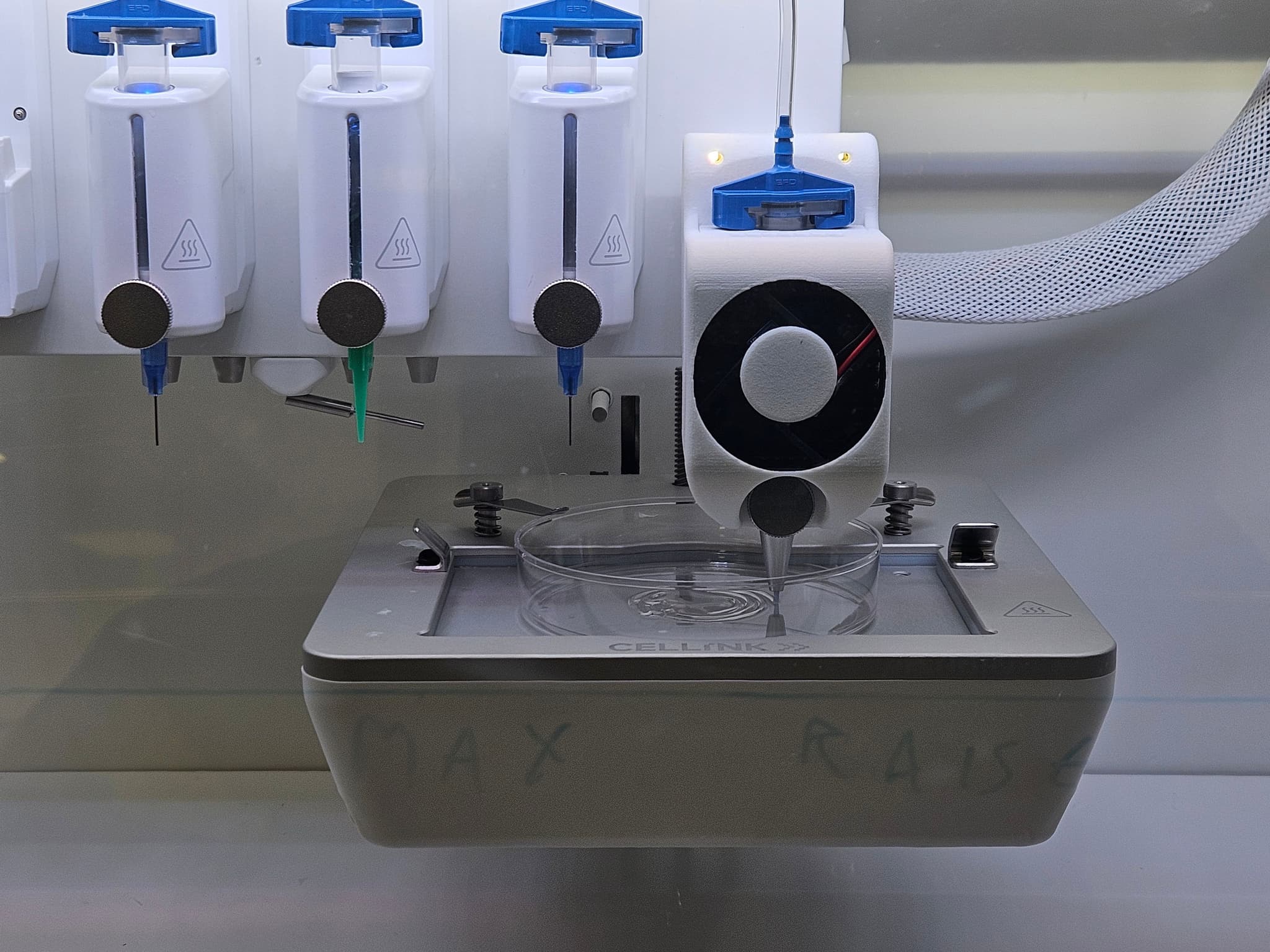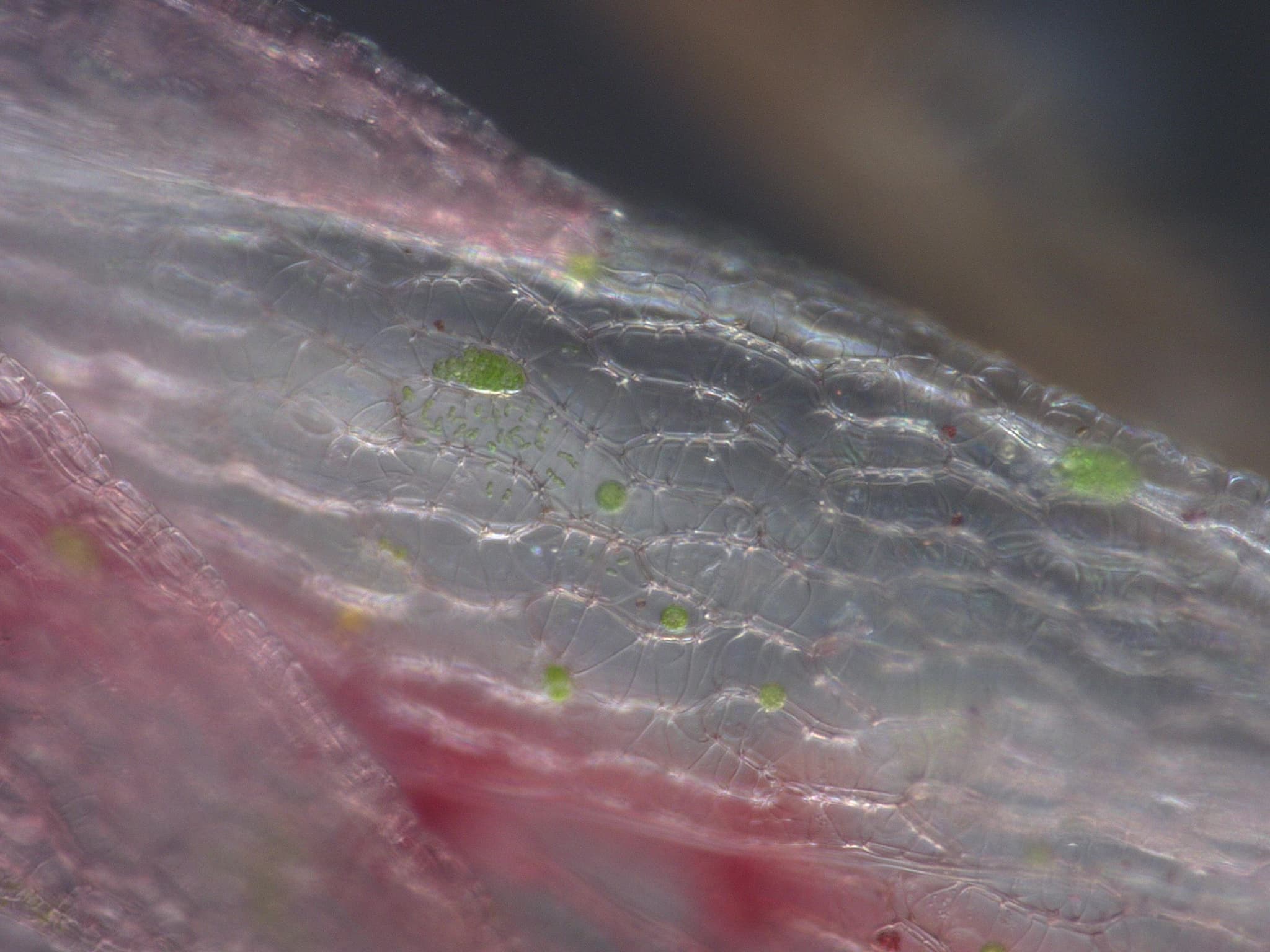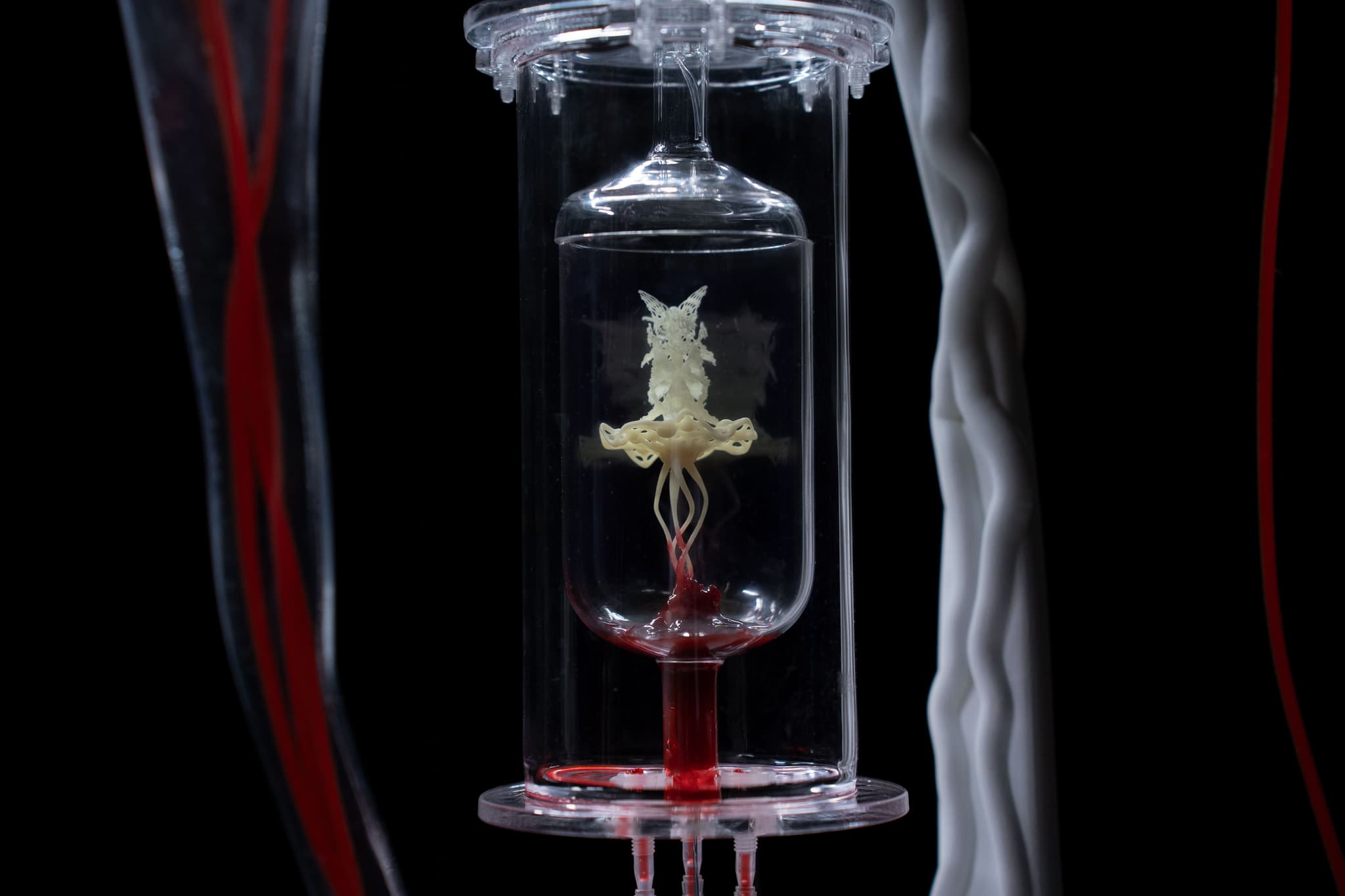1. Your project explores the intricate relationship between humans and microorganisms through the design of microbial architecture. Can you describe how the concept of using human bone tissue in your designs came about, and how this material choice impacts the project’s message?
The journey began with a personal concern: my curiosity and care for overlooked life. I’ve always found joy in observing small signs of life while walking outdoors — moss, lichen, or organisms invisible to the naked eye. During my research, I became increasingly saddened by how human activity has disrupted natural ecosystems. Man-made materials often damage the environment and separate us from the natural world.
Initially, I explored biomineralization: using bacteria or fungi to grow materials, as a way to design something beneficial to both humans and non-human life. But I soon questioned the ethics behind this. Why must we always take or manipulate nature for our own gain, even with good intentions? This reflection led me to ask: what can we give back?
That’s when I came across bone tissue engineering in the medical field, where human stem cells are used to grow bone for healing. Bone is strong, lightweight, and mineral-rich. It struck me: What if we used our own cells to create materials that support ecosystems—a literal part of ourselves offered back to the world? This shift from extracting to donating reframes our relationship with nature. It challenges anthropocentric thinking and presents a more reciprocal, interconnected view of life.
2. The use of human bone tissue in your microbial architecture is a unique approach. Could you elaborate on the technical challenges of working with this material, particularly in terms of its interaction with microorganisms, and how you ensure it functions as a viable habitat for bacteria and fungi?
The process involves differentiating human stem cells into bone cells and growing them on scaffolds — a method drawn from tissue engineering. This requires a controlled, sterile environment and very specific conditions, including temperature, nutrients, and structural support to mimic the human body.
One of the key challenges was ensuring the material would also be suitable for microorganisms. The natural porosity of bone becomes an asset: it allows microbes to settle, form colonies, and interact within the structure. While still in the experimental phase, the goal is to develop a material that is made of human-derived growth that supports microbial life.

3. How does the integration of human bone tissue in your design challenge conventional perceptions of biomaterials in art and architecture? What makes this approach significant for advancing sustainable design principles?
Biomaterials, are often viewed as “natural resources” we extract and repurpose for our own needs. But this reinforces a binary — humans vs. nature. By using human bone tissue, a material from our own bodies, I hope to blur that boundary. It challenges the notion that we are separate from nature and invites a rethinking of material use.
This reframing is essential to sustainability. True sustainability should go beyond minimizing harm — it should involve responsibility, reciprocity, and care. Instead of treating nature as a resource, what if we became contributors to ecological systems?
4. Your work highlights the loss of microbial biodiversity. Could you discuss how you see the role of human-made environments, such as your microbial architecture, in fostering biodiversity and promoting harmonious coexistence with microorganisms?
Microbial biodiversity often goes unnoticed, even though microbes are the backbone of ecological processes like carbon and nitrogen cycling. In wetlands, for example, microorganisms play a crucial role, yet we rarely consider them in conservation efforts.
My project is situated within wetland ecosystems, particularly focusing on sphagnum moss — a species that stores water and supports rich microbial life. These habitats are under threat from pollution and climate change.
Through microbial architecture, I want to design human-made structures that act as alternative sanctuaries — not as replacements, but as additional support systems. It’s a way to reintroduce microbial life into our built environment and start a conversation about coexistence, even on a microscopic level.

5. In creating this architectural design, the project aims to promote biodiversity and emphasize our responsibility towards the microbial world. How do you approach the balance between artistic expression and the biological needs of microorganisms in your design process?
While the project is artistic in nature, it is grounded in extensive research. I studied the types of microorganisms living in moss and the conditions they need to survive. I also explored stem cell cultivation and scaffold design, both theoretically and through practical experiments.
This project was supported by Making In Bio 2024 and the Making Lab, a collaboration between Central Saint Martins and the Francis Crick Institute. The Making Lab at the Francis Crick Institute was incredibly supportive. I had access to scientists, technical knowledge, and bioprinting equipment. These collaborations helped me understand the biological side more deeply and taught me to see the design from multiple perspectives. The balance between art and biology emerges through this dialogue: bridging artistic imagination with biological understanding.
6. Your design evokes a sense of coexistence between nature and human life. What materials, besides bone tissue, have you experimented with to complement or enhance the functionality of your microbial habitats?
I’ve experimented with silk fibroin, a protein extracted from silkworm cocoons, which is widely used in tissue engineering due to its biocompatibility and biodegradability. It provides a porous, flexible scaffold for cells to grow on.
I also incorporated hydroxyapatite, a naturally occurring mineral found in bone, to strengthen the material and enhance its compatibility. These materials, used in combination, allow me to create lightweight, degradable scaffolds that support stem cell differentiation. There’s something magical about using human and natural material; it feels like a genuine collaboration with nature.

7. The concept of fostering biodiversity through human intervention is thought-provoking. How do you foresee this idea evolving into a practical solution for promoting environmental health in the future, beyond the scope of your artwork?
I imagine this approach evolving into a framework for regenerative architecture, where buildings are designed not only for humans but for the entire ecosystem. This doesn’t have to remain speculative. With new materials and interdisciplinary collaboration, architecture can become a tool for biodiversity support. Beyond the technical, this work is also about cultural change — rethinking our role as caretakers rather than dominators. That shift in mindset is just as critical.
8. In creating tissue scaffolds for the microbial habitats, you used various methods. Could you explain some of the techniques you employed to create these scaffolds and how they contribute to the overall functionality and sustainability of your design?
I explored tissue scaffolding as a way to create structural environments for human stem cells to grow on. With help from Francis Crick Institute and Grow Lab in Central Saint Martins, I worked with biomaterials such as silk fibroin and experimented with 3D-printed bio-inks to produce scaffolds with tailored porosity and mechanical properties. It was a significant challenge, as the process required engaging with medical and cellular biology. While I’m still developing a deeper understanding of the biological mechanisms, the experience gave me valuable insights into how material selection and micro-structural design can influence living systems, an idea that continues to shape my thinking around sustainability and the design of life-supporting environments.

9. Your design process brings attention to the challenge of climate change and its impact on microorganisms. How do you integrate the environmental implications of your work into the technical aspects of your design, ensuring that it remains eco-conscious throughout its lifecycle?
This project isn’t a technical fix for climate change—it’s a symbolic, speculative gesture. Rather than trying to “solve” environmental issues, I want to use design to reframe how we relate to them. What if architecture served not just people but the smallest life forms too?
The environmental aspect is embedded in the concept and materials — using biodegradable scaffolds, human-derived materials, and avoiding resource extraction. It's about imagining a more reciprocal future where we give back, biologically and ecologically, rather than continuing a pattern of consumption.
10. Your research and process include working with sphagnum moss cells and their porous structure. How did the properties of sphagnum moss influence your material selection and the design of microbial habitats, and what role does it play in the project’s broader ecological vision?
Sphagnum moss is a powerful species — its structure is hollow, highly porous, and capable of holding large amounts of water, making it ideal for supporting microbial life. I studied its form and used it as a model for my scaffold designs.
Functionally, the moss inspired both the visual language and the technical parameters of the habitats — particularly how they retain moisture and offer shelter. Ecologically, sphagnum moss is a keystone species in wetlands, contributing to carbon storage and climate stability. By referencing it, I aim to highlight the crucial role of small organisms in maintaining global ecological balance.

11. As an artist with an architectural background, how do you see the intersection of architecture and biology in your work? Do you envision future designs where living organisms like microorganisms are an essential part of the built environment?
Absolutely. I see biology not just as a source of inspiration, but as a collaborator in the design process. I imagine architecture as living — not static, but adaptive, responsive, and symbiotic. Buildings could become ecosystems, hosts, or even co-creators.
Microorganisms are the foundation of life, yet we rarely acknowledge them. I believe they have a huge role to play in the future of architecture — from materials to energy cycles. We need to stop thinking of ourselves as separate and instead design in ways that reflect respect, humility, and interdependence.

12. Looking to the future, how do you envision the potential applications of your microbial architecture outside of the art world? Do you think it could be integrated into functional spaces like urban environments or sustainable architecture, and if so, what would that look like?
While this project is artistic and speculative, I see potential for applications in environmental design, conservation, and education. Microbial habitats could become part of ecological restoration efforts, especially in degraded environments. In urban spaces, architecture that supports microbial biodiversity could help reintroduce lost life forms.
But more importantly, this work can influence how people think. If we start designing with microorganisms in mind, we open the door to a whole new realm of possibilities: not just in science or architecture, but in how we understand our place in the world.








